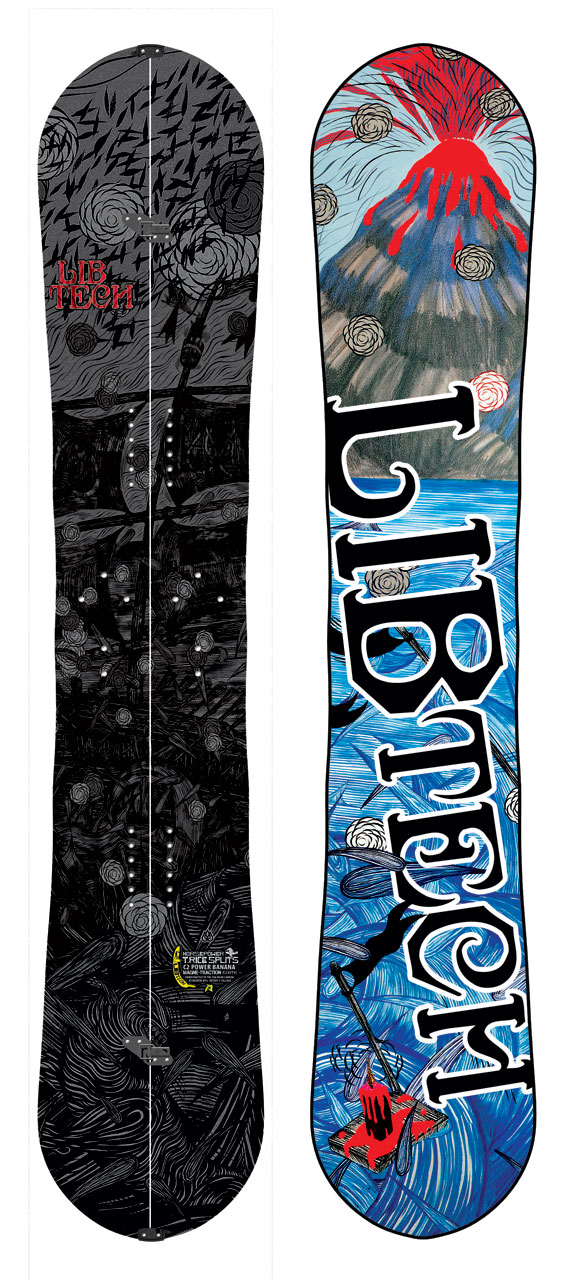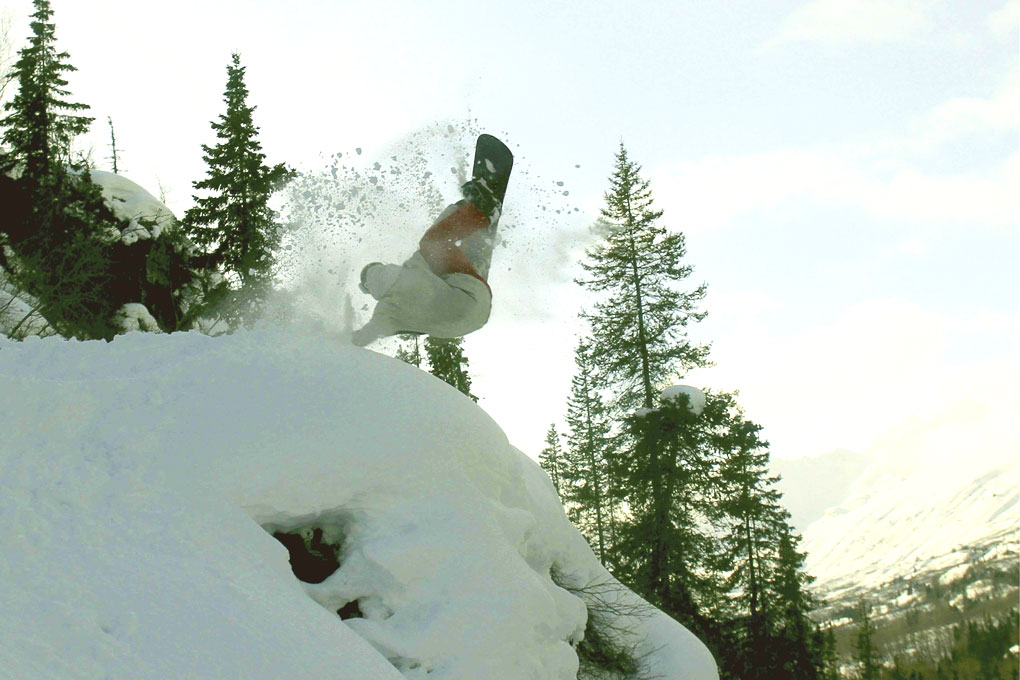 Board: 2013-2014 Lib Tech Travis Rice Pro Split, 161.5cm
Board: 2013-2014 Lib Tech Travis Rice Pro Split, 161.5cm
Boots: Burton Ion
Bindings: Voile Light Rail
Stance: +15, -15, 23.5 in. centered
Tuning / Detuning: I didn’t alter the factory tune
Test Location: Thompson Pass, Alaska
Days Ridden: 9
Alaska is regarded by snowboarders as one of the best places in the world to ride. What the North Shore is to surfers, or Whistler is to downhill bikers, Alaska is to snowboarders.
When I had the opportunity to go to AK this spring, I knew that to handle the steeper lines and massive peaks, I would need a larger board than the 158 Never Summer SL Split that I’d been spending my season on.
I had spent two seasons riding an un-split 157 Lib Tech Travis Rice, and felt more confident in my riding on that particular board than any other, so the Travis Rice Split was my immediate choice when determining what board I would bring. A stiff, freestyle board with hybrid camber and Magna-Traction, the Travis Rice Split is meant to charge everything from valley gaps to Alaska lines with the intensity that Travis brings every time out.
Sizing / Setup
Knowing I needed to size up from my usual 158, I brought the 161.5 TR Split, Travis’s pow-specific pointy splitboard shape. This was the largest board I had ridden, but I knew I’d need every centimeter of it.
For bindings, I mounted my Voile Light Rail bindings perfectly centered and duck stance, as I would on my park boards, in hopes of mimicking my riding as closely as possible, despite riding terrain on the entire opposite side of the spectrum.
Camber Profile
Lib Tech was the first company to introduce “Banana,” or reverse camber, sparking the reverse and hybrid camber craze that has swept the snowboarding world. Since its inception, reverse camber has evolved, and the Travis Rice utilizes a hybrid of reverse and normal camber, called “C2,” to combine the best aspects of both technologies.
C2 puts traditional camber between the outside of each foot to the tips of the board, and reverse camber between the feet. Many other companies offer similar camber options (Burton Flying V, Never Summer RC), and I was eager to compare C2 to the others. Generally speaking, I’d say C2 rode closer to the traditionally cambered end of the hybrid camber spectrum than the others.
A cambered tip and tail truly stood out when committing to lines or plowing through chunder and debris. In Alaska, it’s fairly standard to drop in on a rolling-over slope and hope that that what you’d seen from the bottom was indeed what you were standing on. In those situations, trusting your board is crucial, and the TR Split never made me second-guess my board choice.
When charging through high-speed slashes or sending cliffs, the camber also provided the stiffness and power that I needed to stay on top of the snow and in control in every condition that I was presented with, from blower pow on 55-degree slopes to sun-baked crust on cliff landings. In this regard, the C2 felt more stable than Burton’s Flying V.
When heavy snow or flat light meant that we couldn’t venture higher into the mountains, we ended up in Valdez, where our lines would end at sea level.
In the heavier snow and on the shorter, more playful, freestyle-oriented lines, the reverse camber qualities of the C2 technology really shined. Reverse camber tends to work better at slower speeds by giving the board an increased skate-style feel, allowing butters and spins to be done with ease, while keeping the tips above the snow.

Because the TR is one of few twin tip splits (the Venture Helix is another), the hybrid camber attributes worked equally well riding both directions, and, for once, I was able to comfortably pop a backside 180 into deep snow with confidence that I could ride out smoothly. The amplified float provided by the rocker camber helped tremendously to keep me on top of the heavy snow, where it is much easier to get bogged down at lower speeds. Overall, I felt that it floated better than Never Summer’s RC.
Touring
Because a 15-minute descent often requires a 3+ hour ascent, a splitboard’s performance in touring mode is nearly as important as its capabilities when strapped in sideways. Being comfortable in ski mode can be the difference between a subpar day and an excellent day in the backcountry.
I had relatively little experience skiing, so the transition from riding to touring made me nervous. But the Travis Rice was an excellent board to continue learning on. It provided a lightweight and stiff platform on which to stand, especially on switchbacks or when skiing down a slope. On the TR Split, I felt comfortable skiing down slopes without a skin track, which wasn’t always the case with on the Never Summer SL Split, as the stiffer tails of the TR Split allowed me to lean back to avoid getting bucked forward (as can happen on a free floating heel/telemark-style splitboard binding allows) and compensate for my mediocre skiing skills.
